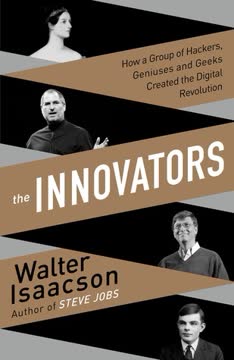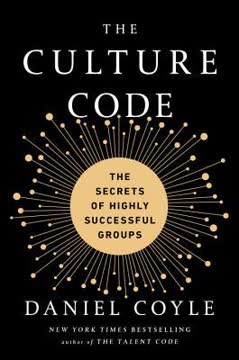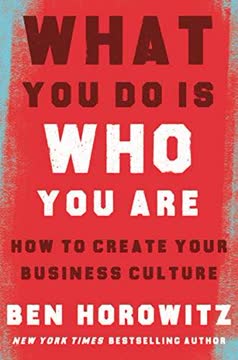Key Takeaways
1. Develop a Competitive SWOT Analysis to Position Your Product
Sales training programs do a decent, if not an excellent, job of covering product and service knowledge, selling skills, sales technology platforms, and company policies. However, at the end of formal training, most sales professionals still lack the confidence and ability they need to hit the ground running because they haven't developed a strong sense of how to position the value of buying from their company rather than from the competition.
Understand your competitive position. A comprehensive SWOT analysis is crucial for sales professionals to confidently articulate their company's value proposition. This analysis should cover six key factors:
- The 4 Ps: Product, Price, Promotion, and Place
- Reputation factors
- Internal resource factors
- External forces
- Trends
- VUCA (Volatile, Uncertain, Complex, and Ambiguous) factors
By examining these elements, salespeople can identify their company's unique strengths and potential weaknesses, as well as market opportunities and threats. This knowledge allows them to position their offerings effectively against competitors and address customer needs more precisely.
2. Create Ideal Account and Prospect Profiles for Targeted Outreach
Skipping or spending too little time defining an IAP is one of the biggest mistakes salespeople make; they pay a dear cost in time wasted on accounts that may never buy.
Focus on high-value prospects. Developing Ideal Account Profiles (IAPs) and Ideal Prospect Personas (IPPs) is essential for efficient and effective prospecting. These profiles help salespeople target accounts with the highest likelihood of buying and the greatest lifetime value.
Key components of an IAP include:
- Firmographic fit (industry, company size, geography)
- Operational fit (current equipment, purchasing policies, buying decisions)
- Situational fit (strategic initiatives, internal capabilities, financial health)
IPPs should focus on:
- Job titles and functions
- Professional objectives
- Influence map (decision-makers, influencers, gatekeepers)
- Core value propositions and primary objections
By creating detailed IAPs and IPPs, sales teams can concentrate their efforts on the most promising prospects, significantly improving their chances of success.
3. Craft Compelling Messages Aligned with Buyer's Journey Stages
Crafting the right message begins with recognizing that prospects exist at different stages of purchase intent in the customer buying cycle.
Tailor your approach to buyer readiness. Effective messaging should be customized to the prospect's stage in the buying cycle: unaware, aware, interested, evaluating, purchase, and post-purchase. This approach ensures that communications are relevant and valuable to the prospect at each step.
Key principles for crafting compelling messages:
- Use the Compel with Content (CWC) framework: obstacle, outcome, opportunity
- Personalize communications based on prospect research
- Craft attention-grabbing subject lines
- Provide value before asking for anything in return
- Use social proof and case studies to build credibility
- Include clear, single calls-to-action
By aligning messages with the buyer's journey, salespeople can more effectively move prospects through the sales funnel and increase their chances of securing meetings and closing deals.
4. Design Multi-Touch, Multi-Channel Prospecting Campaigns
While we want to avoid providing a universal prescription, we do want to set a recommended starting point that sales teams can confidently use to build multichannel, multitouch campaigns.
Persistence and variety are key. Successful prospecting campaigns utilize multiple touchpoints across various channels to increase the chances of engaging prospects. A typical campaign might include 8-12 touches over 20-22 business days, combining emails, phone calls, and potentially social media interactions.
Sample 9-touch, 20-business-day campaign structure:
- Day 1: Email (Call to Action: Internal Referral)
- Day 3: Email (CTA: Internal Referral)
- Day 6: Email (CTA: Unaware to Aware Asset Click)
- Day 8: Email (CTA: Secure a Meeting)
- Day 8: Phone Call (CTA: Secure a Meeting)
- Day 11: Email (CTA: Aware to Interested Asset Click)
- Day 13: Email (CTA: Interested to Evaluating Asset Click)
- Day 18: Email (CTA: Secure a Meeting)
- Day 20: Phone Call (CTA: Secure a Meeting)
This approach balances persistence with respect for the prospect's time, increasing the likelihood of a positive response.
5. Qualify Leads Effectively Using AWAF and BANT Frameworks
To avoid either of these traps, every sales team must have a set of (no more than five) must-have criteria that is based, unsurprisingly, on the known characteristics of "bad prospects" and "bad customers."
Efficient qualification saves time and resources. The Predictable Prospecting method employs two waves of qualification: Are We A Fit? (AWAF) and Budget, Authority, Need, and Timing (BANT). This approach helps salespeople quickly identify high-value prospects and avoid wasting time on unqualified leads.
AWAF criteria may include:
- Physical or technology infrastructure compatibility
- Regulatory requirements alignment
- Cultural compatibility
BANT qualification focuses on:
- Need: Uncovering explicit needs and opportunities
- Timing: Assessing urgency and decision timelines
- Authority: Identifying key decision-makers and influencers
- Budget: Understanding funding processes and availability
By applying these frameworks, sales teams can focus their efforts on prospects with the highest likelihood of becoming valuable customers.
6. Optimize Your Sales Pipeline with Key Metrics and Lean Processes
Prospecting is not a set-it-and-forget-it process. Sales teams must vigilantly measure and optimize their pipeline to achieve the maximum return on sales investment.
Measure, analyze, and improve continuously. Successful sales organizations use lean optimization techniques and key performance indicators (KPIs) to continuously improve their pipeline performance. This involves tracking metrics at each stage of the sales process and making data-driven decisions to enhance efficiency.
Key metrics to monitor include:
- New Queue: Lead volume by source, time to engage, disposition rates
- Working Queue: Appointments set per day, touches per day, email open and click rates
- Qualifying Queue: Lead disposition rates, cycle time
- Closing Queue: Win rates, cycle time, pipeline value
By regularly reviewing these metrics and applying lean optimization principles, sales teams can identify bottlenecks, refine processes, and maximize their return on sales investment.
7. Leverage Technology and Tools to Enhance Sales Development
Sales tools must be viewed as a means to an end; they should support sales processes that help sales professionals close more deals at a faster rate.
Choose tools that amplify effectiveness. The right technology can significantly enhance sales development efforts by streamlining processes, providing valuable insights, and enabling more personalized outreach. Key categories of tools to consider include:
- Contact discovery and management
- Sales enablement and content management
- Predictive analytics for lead scoring
- Marketing automation platforms
- Sales workflow automation
- Email tracking and management
- Web conferencing and document sharing
- CRM systems
When selecting tools, focus on those that integrate well with existing systems, support your specific sales processes, and provide measurable improvements in efficiency and effectiveness.
8. Build and Manage High-Performing Sales Development Teams
To that end, start by looking within the sales development organization for talent. However, beware of simply promoting the top performing SDR to manager. Often, high performers are ruthlessly independent.
Cultivate a strong sales development culture. Building an effective sales development team requires careful consideration of organizational structure, hiring practices, training programs, and management approaches. Key strategies include:
- Insourcing sales development for better control and talent development
- Hiring smart, conscientious, and articulate early-career individuals
- Providing comprehensive training on products, processes, and skills
- Structuring teams with dedicated sales development managers
- Enabling SDRs with effective processes and technology
- Rewarding results rather than activity
By focusing on these elements, organizations can create a high-performing sales development function that consistently generates quality leads and drives revenue growth.
9. Cultivate Essential Habits of Successful Sales Development Representatives
As a result of the many books the two of us have read on selling, we have come to the conclusion that there is little new under the sun concerning the habits of highly successful salespeople.
Develop winning behaviors and mindsets. Successful SDRs cultivate habits that enhance their productivity, communication skills, and professional effectiveness. These habits fall into three main categories:
Time Management:
- Focus on high-impact activities
- Schedule tasks in dedicated time blocks
- Plan and break down goals into manageable pieces
- Delegate non-essential tasks
Communication:
- Project a positive attitude
- Ask insightful questions and listen actively
- Respond promptly to inquiries and requests
Professional Effectiveness:
- Maintain accurate CRM records
- Persist with personalized follow-ups
- Continuously expand your network and knowledge
- Protect your professional reputation
- Commit to ongoing learning and skill development
By consistently practicing these habits, SDRs can improve their performance, build stronger relationships with prospects, and advance their careers in sales.
</rewrite>
Last updated:
FAQ
What's "Predictable Prospecting" about?
- Sales Pipeline Focus: "Predictable Prospecting" by Marylou Tyler and Jeremey Donovan is a guide on how to systematically increase a B2B sales pipeline using a structured approach.
- Balance of Theory and Practice: The book strikes a balance between theoretical concepts and practical applications, providing real-world examples and case studies.
- Sales Process Optimization: It emphasizes optimizing the sales process to make prospecting more predictable, productive, and profitable.
- Target Audience: The book is aimed at sales development professionals, account executives, and sales leaders looking to improve their prospecting efforts.
Why should I read "Predictable Prospecting"?
- Improve Sales Results: The book offers strategies to enhance sales results by streamlining prospecting activities into an effective selling system.
- Practical Insights: It provides actionable insights and methodologies that can be directly applied to real-world sales scenarios.
- Comprehensive Framework: Readers gain a comprehensive framework for targeting, engaging, and optimizing their sales pipeline.
- Expert Endorsements: The book is praised by industry experts like Neil Rackham and Jeb Blount for its balanced approach and practical value.
What are the key takeaways of "Predictable Prospecting"?
- Structured Prospecting: Implement a structured approach to prospecting that includes targeting, engaging, and optimizing.
- Ideal Account and Prospect Profiles: Develop Ideal Account Profiles (IAP) and Ideal Prospect Personas (IPP) to focus efforts on high-value targets.
- Multichannel Campaigns: Use multitouch, multichannel campaigns to effectively engage prospects and secure meetings.
- Continuous Improvement: Regularly measure and optimize the sales pipeline using key performance indicators and lean optimization techniques.
How does the book define the Ideal Account Profile (IAP)?
- High Lifetime Value: An IAP targets companies with a high lifetime value and a high likelihood of purchasing.
- Segmentation Factors: It includes firmographic, operational, and situational fit factors to identify the most promising accounts.
- Customization: The IAP should be tailored to the specific needs and characteristics of the business.
- Strategic Focus: It helps sales teams focus their efforts on the most valuable segments, maximizing return on effort.
What is the Ideal Prospect Persona (IPP) according to "Predictable Prospecting"?
- Targeted Approach: The IPP helps identify the right individuals within target accounts to engage with.
- Professional Objectives: It includes understanding the professional objectives and challenges of the prospect.
- Influence Map: The IPP outlines the decision-making process and identifies key influencers and decision-makers.
- Personalization: It emphasizes the importance of personalizing communication to resonate with the prospect's needs and goals.
How does "Predictable Prospecting" suggest crafting the right message?
- Buying Cycle Stages: Tailor messages to the prospect's stage in the buying cycle, from unaware to purchase.
- Compel with Content Framework: Use the Compel with Content (CWC) framework to structure messages with obstacle, outcome, and opportunity.
- Emotional and Rational Triggers: Balance emotional and rational triggers in messaging to move prospects through the buying cycle.
- Personalization Levels: Adjust the level of personalization based on the prospect's stage and the context of the communication.
What are the best quotes from "Predictable Prospecting" and what do they mean?
- "Prospecting is the most important work in sales.": This quote emphasizes the critical role of prospecting in driving sales success and pipeline growth.
- "You can’t be all things to all people.": It highlights the importance of focusing on ideal accounts and prospects to maximize sales efficiency.
- "Prospects don’t care what you do. They care about what you do for them.": This underscores the need to align sales efforts with the prospect's needs and value propositions.
- "Always be testing.": It encourages continuous experimentation and optimization in sales processes to achieve better results.
How does "Predictable Prospecting" recommend handling objections?
- Empathy and Understanding: Acknowledge objections with empathy and seek to understand the prospect's concerns.
- Probing Questions: Use probing questions to isolate the issue and gather more information.
- Case Studies and Proof: Provide case studies and proof points to address objections and demonstrate value.
- Confirmation: Confirm that the objection has been addressed to ensure it doesn't linger in the prospect's mind.
What is the role of technology in "Predictable Prospecting"?
- Sales Productivity Tools: The book discusses various sales productivity tools that support the prospecting process.
- Workflow Automation: It highlights the importance of using workflow automation tools to manage multitouch campaigns.
- Data-Driven Insights: Emphasizes leveraging data-driven tools for developing and evolving Ideal Account and Prospect Profiles.
- Integration with CRM: Recommends integrating tools with CRM systems for seamless data management and process optimization.
How does "Predictable Prospecting" suggest measuring and optimizing the sales pipeline?
- Key Performance Indicators: Use KPIs to measure success at each stage of the sales journey.
- Lean Optimization: Apply Lean Six Sigma and Design Thinking frameworks for continuous improvement.
- Intra- and Inter-Stage Measures: Track both intra-stage (volume, cycle time) and inter-stage (advancement, dropout) metrics.
- Prioritization: Prioritize issues and opportunities based on business impact and degree of difficulty.
What are the recommended habits of highly successful SDRs in "Predictable Prospecting"?
- Time Management: Focus on scheduling, planning, and delegating tasks to maximize productivity.
- Effective Communication: Emphasize listening, asking questions, and responding promptly to prospects and clients.
- Professional Effectiveness: Maintain accurate records, persist with personalized touches, and continuously learn and improve.
- Positive Attitude: Project a positive outlook and build rapport with prospects to foster trust and engagement.
What is the future of prospecting according to "Predictable Prospecting"?
- Data-Driven Tools: The future will see more data-driven tools for developing Ideal Account and Prospect Profiles.
- Accurate Databases: Expect more accurate databases for identifying leads that match IAP and IPP criteria.
- Knowledge Bases: Intra- and inter-company knowledge bases will help identify effective practices.
- Account-Based Selling: Tools will make personalization more seamless, enhancing account-based selling strategies.
Review Summary
Predictable prospecting how to radically increase your B2B sales pipeline receives mixed reviews. Readers appreciate its structured approach to B2B sales, practical advice, and actionable strategies. Many find it valuable for sales leaders and those new to prospecting. The book covers topics like developing ideal customer profiles, creating compelling messages, and optimizing sales processes. However, some critics feel the content lacks originality and depth. While most reviewers recommend it for its actionable insights, a few suggest it's more suitable for beginners or larger organizations.
Similar Books










Download PDF
Download EPUB
.epub digital book format is ideal for reading ebooks on phones, tablets, and e-readers.




